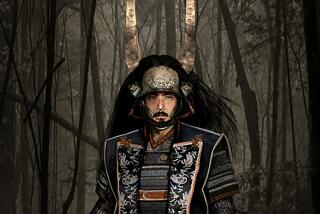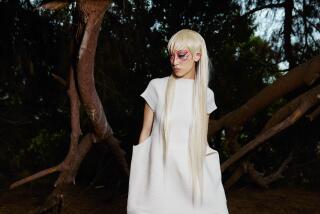Long-Distance Lesson in History of Kimono
- Share via
The private group that came to see the “When Art Became Fashion: Kosode in Edo-Period Japan” exhibit Monday at the Los Angeles County Museum of Art had a unique appreciation for the show.
Kosode are the 17th-, 18th- and 19th-Century precursors of the modern kimono. Thirty-four fashion students studying how to make kimonos and their teachers at the Nishijin Kimono School in Kyoto came to Los Angeles to see the kosode. (Their whirlwind, six-day trip included the requisite trip to Disneyland plus Tijuana.)
The students, dressed in kimonos, filed off a tour bus, where they were greeted by about 100 members of the local Japanese-American community, most of whom were also wearing traditional Japanese clothes.
“They come from Japan to pay homage to the predecessor of the kimono because this exhibit has never been done in Japan,” said Robert Singer, the museum’s curator of Japanese art.
“You can’t see this many in Japan,” confirmed Sharon Takeda, a curator of costumes and textiles at LACMA. “One woman came up to me who lives in Kyoto and said she had never seen this many kosode in one place--even in Kyoto. Kyoto has very few in their national museums.”
“Maybe in Japan they don’t have the organization to collect kosode from many museums,” suggested Harumi Nishikawa, who lives in Torrance. “The U.S. museums do that--they like to help.”
The sight of 100-plus women in kimonos prompted Suhail Samo, a museum security guard, to remark: “They dress so nicely. To us it looks impressive, but to them I guess it’s just a habit.”
Well, not exactly.
Katsuko Haraguchi, wife of the Japanese consul general, was in a knit skirt and jacket, pumps and a ponytail. She said she couldn’t wear a kimono that day because “I drove myself. It’s a little bit hard.” The obi belt, she explained, is so thick that she can’t sit comfortably behind the wheel. “Zori are very thick also,” she said of the thong shoes.
“Too hard,” agreed Luna Suyematsu, head of the Japanese Ladies Culture Seminar and organizer of the event. Instead, she wore black velvet leggings topped with a short robe she called a “modern kosode.”
After viewing the exhibit, the group--which included local teachers and students of tea ceremony, dance, calligraphy, flower arrangement and kimono dressing--was ferried to the Hotel Nikko for a lunch of tortellini, steak and potatoes. “The Japanese from Japan expect a Western menu when they come here,” said Singer.






